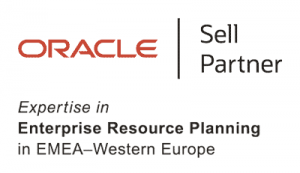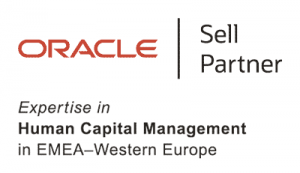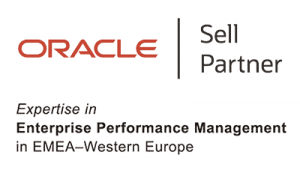As Featured in ERP Today | Written by Mark Sweeny, CEO of de Novo Solutions
Where is the new money for ERP?
In the cloud era, the ERP market that serves an organisation’s back office business operations is dominated by the tier one players of SAP, Oracle, and Workday, supplemented by the tier two vendors such as IFS, Unit4, and FinancialForce et al who have focussed upon the smaller to medium sized enterprises. The software vendors’ proposition that has served them so well over the past decade, as cloud platforms and SaaS took hold, is itself now changing.
The argument around feature-function servicing finance, procure-ment, HR, payroll and supply chain – either in silos or for those who were smart enough to re-engineer their applications for the cloud – is no longer enough. The markets they serve are now learning from their experiences of dealing with customers through the front office and they are putting their employees front and centre, not only in how we build systems, but fundamentally how we ‘work’. Don’t underestimate the impact of this as it is more than just the next fad of IT as it affects workplace culture and ultimately an organisation’s performance.
The conversation is changing and it’s going to have a profound impact on the back office
Giving employees more power to shape business
The conversation is changing and it’s going to have a profound impact on the back office enterprise. It is this that suggests a new frontier of opportunity for those with entrepreneurial flair.
The old adage “look after your employees and they will look after your customers” is very real. Taking the lessons learned from the front office, and two decades of unprecedented learning from the powerhouse platform known as Salesforce, we are in a new era where we are replicating the move from ‘customer service’ to ‘customer experience’ but now focussed on the ‘employee experience’. In doing so relatively new players like
ServiceNow (definitely the one to watch in my opinion) are coming to the forefront and opening up the experience economy.
No longer are we talking about which software vendor has the best feature-function in the cloud. It is assumed, rightly or wrongly, that all the major players have basic standard process capabilities. Now we are looking across an organisation’s enterprise and recognising that employees will interact with various ‘data sets’ outside the core functions of the ERP platform.
This move is more than subtle as we transition from being process driven to data driven. Machine learning and adaptive intelligence (a subset of artificial intelligence) are taking hold to play greater roles in deciphering what we need to know, when, and what to execute. So, finally, we are seeing that tech platforms can be even more useful in helping employees to maximise customers. To take this up a level, employees need to be fully engaged with the tech best suited to their market.
The challenge for many start-ups or SMEs is to convince someone to ‘give it a go’
Where to focus innovation today
With market economics in full flow and the oligopoly of the tier 1 players firmly secured, coupled with consolidation of the tier 2 players, just where are these new opportunities? I believe we find them in two areas.
Innovation usually comes from start-ups and the ‘S’ in ‘SME’ so, for me, this is the place to look. Success in the cloud game favours those suppliers that can provide niche industry solutions to operational problems. And there is nowhere better to look to find breakthroughs right now than the UK, not only in London, but with regional tech hubs emerging all over the country. The large vendors don’t focus upon industry solutions (save for IFS and Infor that have highly specialised applications for industries and micro-verticals), they leave this to the wider ecosystem to use their platforms to solve these problems.
But real innovation in the ERP market today has to start with the basic premise that the world doesn’t need another ERP or HCM SaaS application in the cloud. However, what is required are solutions to those industry functional specific gaps, or gaps focussed on the employee to untap new ways of working that to date have not really been considered or leveraged. If you can bring both elements together then so much the better. In doing this there will be an element of connecting the front office to the back office seamlessly and leveraging new data driven technologies to predict and inform employees as to what’s next in the world of work.
Challenges for changing up
By carving out a high degree of specialism with vertical solutions, such companies are then easily targeted once they are proven to be snapped up by bigger fish in the sea. This is the natural order of things, before the cycle starts again as usually the original founders of such companies become the new business angels for the next generation. However, innovation – often unproven at scale – usually has its detractors and the challenge for many start-ups or SMEs is to convince someone to ‘give it a go’. Whilst risk can be mitigated through minimum viable products, prototypes and pilots, it is those corporate sponsors that are brave enough to metaphorically ‘put their head above the parapet’ who we should all be really grateful to. The problem is finding them.
Paul Sheppard, founder and chief executive of start-up We Build Bots, said: “I have long believed that the public sector, especially central government, can be the catalyst for innovation and change. Contrary to belief the public sector environment is extremely fast moving and the challenges constantly mounting from the demands being made. But in order to take advantage and benefit from such innovations, government needs to be brave and buy the offerings the SME market has to offer. It is the SME market that often, in the face of great adversity, will try to solve problems that the larger software vendors do not necessarily see as priority. We have to constantly encourage and educate the buyers in government to look at what is coming.”
And Pamela Cook, CEO at Infotech and panel member of HM Government SME, commented: “Whilst not every solution is ‘GovTech’, it is one of the biggest growth markets and possibly the hotbed of future innovation for the private sector. A reversal for what for many years has been private sector advances influencing the public sector.”
Follow the money…
Time will tell if my observations are right, but by judging how much business angel, private equity and VC money is now focussing on the ‘enterprise’ and B2B applications, rather than having to deal with ‘fickle’ consumers in the B2C market, the new decade will see an influx of start-ups and niche SaaS solutions focussed on the employee and industry vertical solutions. At the extreme, by the time this new decade ends, we probably won’t be talking about ERP platforms anymore and the very acronym could be finally consigned to the history books. Paul – you might need to rename the magazine by then!
Disclaimer: The opinions expressed here represent my own and not those of my employer, companies I invest in or am associated with. In addition, my thoughts and opinions change from time to time and I consider this a necessary consequence of having an open mind. This article is intended to provide a semi-permanent point in time and as such any thoughts or opinions expressed within out of date posts may not be the same or similar to those that I hold today.
















